The Rise of Digital Marketing in North American Politics
Many regard Barack Obama to be the pioneer of digital marketing for political purposes. Then, other politicians followed and used the same platforms.
Obama introduced new marketing strategies to disseminate information to the public and to conduct fundraising for his campaign. While Trump, the current POTUS, is widely known for using Twitter. He often tweets outrageous messages to his massive following in the millions, among other strategies.
Over the past few years, the world has seen an array of digital marketing strategies used in the political sphere. With creative and intelligent teams in charge of presidential campaigns, the politicians are able to have their voices heard by millions. Here, we examine the digital marketing playbook of running candidates in recent years as well as the young prime minister of Canada.
Donald Trump
In 2016, Donald Trump beat Hilary Clinton to be the 45th president of the United States of America. Trump’s victory sent shockwaves around the world as he lost the popular vote, but somehow received 77 more electoral votes than Clinton.
Casting the ballots in for your president can be a similar experience to shopping. You see advertisements around and you try to collect as much information as possible before you make the final purchasing decision. Although choosing a candidate to vote for is more complicated, it also involves a great deal of marketing.
During a post-election interview, Trump claimed that ‘social media helped me win’.
Looking back at his 2016 presidential campaign, he first managed to outsmart his rivals for the Republican seat and then edged Democrat candidate Hillary Clinton. Many experts believe that marketing won him the presidency. His unexpected victory was fueled by a very strong digital marketing campaign. According to search engine giants Google, Trump appeared in way more search results than his opposition.
Many might think Trump forked out millions for his campaign. But in reality, he invested a tiny amount on traditional forms of advertising. You can’t even compare his advertising budget to that of Clinton’s (which was a whopping $194 million). In the last two months leading to election day, Trump only spent $4.4 million on advertising. It might sound like a ton of cash, but it’s nothing in the $6 billion industry of American political advertising.
With insights into his budget, Trump’s success sheds light on the power of content marketing and social media. In the 21st century, traditional forms of communication no longer have the effectiveness they once had. These days, a small investment could also help you to achieve success. Just like Trump did with new media.
Let’s take a look at how his marketing campaign was one of the biggest reasons he won the presidential election.
1. Using Brand Identity to his advantage
Before entering the world of American politics, Trump was a well-known businessman and television personality. With his main business as a real-estate developer, he owns and manages hotels, casinos, golf courses, resorts, and residential properties around the world.

In 2004, he began hosting the American reality television program ‘The Apprentice’. The show featured businessmen and businesswomen who competed for a spot in Trump’s organization. All tasks were business-related covering product selling, fundraising, advertising campaigns, and so on.
After hosting the show for 14 seasons, he became popular around the globe and then declared that he would be running for president. With his fame and popularity, he used his famous name and established brand to attract attention.
“Trump capitalized on the power of the Trump brand, which people associate with and aspire to luxury, wealth and celebrity,” said Tim Calkins, professor of marketing at Northwestern University’s Kellogg School of Management.
Hillary Clinton was also known to the world as a former First Lady of the United States. However, her branding wasn’t as powerful or appealing. In the entertainment world, she had no brand identity.
2. Communicating messages different from other candidates
Trump’s campaign slogan was “Make America Great Again”, which became known around the globe as “MAGA”. He used extreme messages that no other candidate would have ever dared to say. His courage to do so helped him to stand out from other candidates.
“Build the wall and make Mexico pay for it” – Donald Trump on what he would do if he got elected.
Here’s an example of one of his statements. It’s so absurd, but only one man can pull it off. All his messages targeted groups of voters that shared similar lifestyles, perceptions, and concerns. His campaign resonated with those that were more interested in driving the local economy. As well as those who felt concerned over their public safety. All in all, his messages communicated that he was going to make a change and he stayed consistent with his communication.
3. Framing competitors as the “problem”
“Trump created a sense of what the problem was, framed it and then juxtaposed himself as the solution,” according to Russ Klein, chief executive of the American Marketing Association.
Focusing on the weaknesses of his competitors, he made them all look like they were the problem and he was the solution. To top it off, he labeled them with nicknames that just stuck. The nicknames were devastatingly unflattering and lowered their credibility in the minds of voters.
Here are some of the top nicknames:
‘Crazy Bernie’
Origin: Campaign rally in Pensacola, Florida, on Jan. 13, 2016.
‘Crooked Hillary’
Origin: Campaign rally in Watertown, New York, on April 16, 2016.
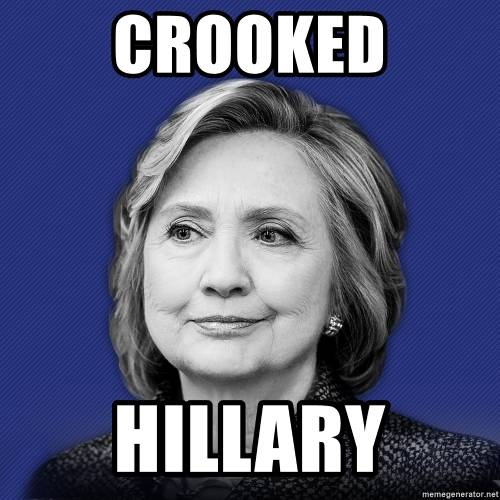
Memes of Hillary Clinton were shared all over the internet
‘Little Marco’
Origin: Campaign rally in Columbus, Ohio, on March 1, 2016.
‘Lyin’ Ted’
Origin: Campaign rally in Columbus, Ohio, on March 1, 2016.
‘Low Energy’ Jeb
Origin: August 2015.
‘Goofy Elizabeth Warren’
Origin: May 6, 2016.
4. Gaining attention from numerous rallies
Public appearances will garner attention. Trump participated in as many as he could to generate buzz and media attention. During the campaign, a total of 323 rallies were held: 186 for the primary season and 137 for the general election.
He put himself out there to communicate his message to the voters. At his rallies, with a total attendance close to 1.4 million people, he talked about their concerns, values, and lifestyles. At the opposing end, Clinton’s rallies were pale in comparison.
5. Social media know-how
“I doubt I would be here if it weren’t for social media, to be honest with you,” the president told Fox Business Network’s Maria Bartiromo
Social media is a tremendous platform when it comes to communicating with your voters. In January 2016, 44% of American adults stated that they turn to this form of media for news on the presidential election. Fewer people are picking up local and national newspapers for this type of news.
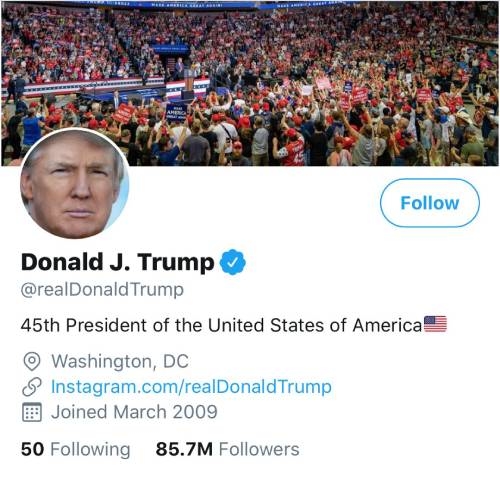
As of September 2020, the Republican president has over 85 million followers on Twitter. Going back four years to 2016, he had amassed a 52 million following. During his campaign, social media was his primary communication channel. His strategy wasn’t about posting pre-planned messages or directing people to his campaign website. Instead, he engaged with his supporters and started conversations with them. Although some of his tweets were controversial, it earned him free coverage from the press. Whatever he tweeted ended up creating buzz and being featured in the latest shows.
Just like other top influencers, he knows how to use social media such as Facebook and Twitter to keep people in the loop and show what’s going on in his life. Among the world’s politicians, he has the most popular Twitter account.
Digital marketing offers an array of prominent features that traditional channels simply aren’t able to. Here are some of the standout features helping to change political marketing:
6. Reach individuals directly
Times are changing and it may no longer be effective to rely on traditional forms of advertisement. In the past, presidential candidates often used the television, radio, snail mail, cold calls, and ambassadors to bring about awareness. There was no way of communicating directly with individuals.
With traditional forms of advertising targeting larger groups at once, the messages communicated were very general. With digital marketing, candidates can reach voters directly through efforts like SEO, pay per click (PPC), blogging, and more.
7. Craft personalized messages
With digital marketing, presidential candidates can understand more about the voters. Messages are customizable and tailored according to the interests and concerns of the public.
Imagine how personalized a marketing message could be. The message might:
- Address you by name
- Be delivered on the channels you’re most likely to check
- Address a concern or interest that’s been on your mind
A personalized message is way more effective than just a generic one targeted to a large group. Unlike past campaigns, the messages feel more like a face to face conversation you’re having with a politician. It’s as if the politician has his or her eyes directly on you and understands exactly what you need.
8. Engage even more with voters
With so many options provided by social media, there’s a ton of content a politician can put out there. The best part is the frequency is unlimited. You could post donation requests, the latest events, legislation updates, and so much more.
One of the best ways to engage with your voters is through live video. Instead of traditional news shows, this feature allows politicians to make announcements and have conversations. The days of just talking at your voters are long gone. Live videos are done in real-time and encourage personable engagement.
Asking questions is also another option to boost your engagement on social media. It’s always good to have two-way communication because it shows that you’re willing to lend your ears. For example, with Instagram stories, you’re able to ask questions and post the answers to all your followers.
Thanks to digital marketing, candidates can reach individuals on a larger scale. This means more accurate polls, more engaging Q&A sessions, and sharing of content.
9. Analytics to study campaigns
Before the rise of the Internet, the data collected by political parties generally covered home addresses, voting history, party affiliation, and other simple categories. However, with better insights through analytics, information on voters has grown drastically.
All the data collected is then organized by computer algorithms. This allows campaigns to efficiently go through the issues and concerns that voters care about most. The Trump campaign in 2016 reportedly “target[ed] 13.5 million persuadable voters in sixteen battleground states, discovering the hidden Trump voters, especially in the Midwest” (Persily, 2017, p. 65). Based on this report, campaigns can be data-driven and we’ll be seeing more of it in the future.
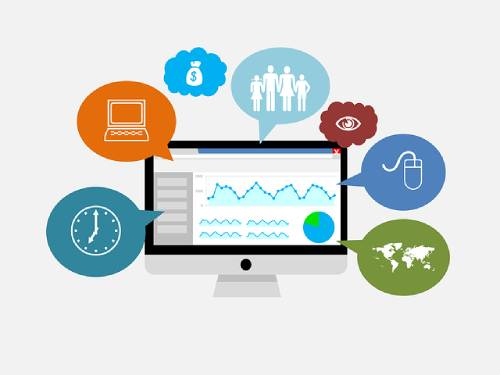
Analytics is crucial to a presidential campaign. Besides insights into voter behavior and interests, you can also see which campaigns are working. For example, with hashtags, you can measure the relevancy and popularity. If a hashtag is trending and being used positively, then you know there’s a plus point for the candidate.
On top of that, digital marketing also tells candidates the best days and times to post on social media. You might be wondering why, but the best day and time to post on Facebook, for example, is on a Wednesday at 11 am or 1 pm. This was based on data collected by Sprout Social.
10. Free or cost-effective options
A presidential campaign often means many millions of dollars being spent. No matter where the funds are coming from, candidates need to be smart with their budgets. This is where digital marketing helps with optimizing budgets. Although campaigns might still be considered expensive, the price tag is much more affordable and reasonable than conventional media. Besides, there are so many free or cost-effective options to be employed in a politician’s playbook.
Digital marketing campaigns don’t always mean that money is going out. It can also help bring money in through fundraising. According to Donald Trump’s digital director Brad Parscale, the biggest social networking platform in the world was detrimental to generating a big portion of the campaign’s funds.
“Facebook was the single most important platform to help grow our fundraising base.” – Brad Parscale
Parscale’s team utilized multi-variate testing for fundraising. The team had been testing up to 60,000 variations of Facebook Ads a day. They were very successful in this area as the ads helped them to generate $90 million in August 2016 and the amount continued to grow as the campaign continued.
Whether he’s a likable character or not, Trump’s utilization of digital marketing during the 2016 presidential campaign is definitely something to take note of. It has shown how powerful content marketing and social media can be, beating traditional forms of communications. As we approach the 2020 election day, we will see digital marketing play a huge role in how candidates communicate and engage with voters. Every candidate out there will be trying to target individuals, hoping to win their votes.
Hillary Clinton
In 2016, the presidential race was an extremely tight one, it could have gone either way. Hillary Clinton won the popular vote but lost the one that mattered – the electoral vote. Nevertheless, she finished in second place and was this close to becoming the first female president of the United States of America.
Running for president shares many similarities to a business’ marketing efforts. To even be considered by voters, you have to identify your target audience and brainstorm the best methods to reach them.
As we look back on the 2016 presidential campaign, it didn’t only involve television advertising, direct mail, or CRM campaigns. Unlike past elections, this one was more content-driven with digital marketing strategies in place. Politicians themselves became the authors and distributors of news, opinion, and articles. The days where we only had big media to rely on were long gone.
When it comes to the former First Lady and her team, her digital marketing campaign was thoughtfully planned out and executed. As part of her marketing efforts, “The Feed” was the name of her digital news operation. Along with multiple digital marketing strategies, her team consistently published editorials covering broad topics covering political and entertainment figures to baking recipes and policy breakdowns. These were blasted all over social media.
Here are the key takeaways from her campaign:
1. Leverage your brand’s strength through storytelling and engagement
In terms of charisma and personality, Clinton may not be a natural. She doesn’t have the same ability to please a crowd like Obama or Bill Clinton, but she’s well-known for being a great listener. When it comes to one-on-one settings, she makes strong lasting impressions.
Knowing her strengths and weaknesses, the team focused on her listening skills and found ways to engage with voters. They made voters feel like they had direct access to her.
“A lot of the [campaign] videos you see are about these intimate moments,” said Jessica Morales Rocketto, Hillary for America’s Digital Organizing Director. “In organizing that, we’re trying to help people meet Hillary through contests. We’re trying to make sure she comments on Facebook pages, likes Instagram posts, and also [give people] access to ask her questions through conference calls or livestreams.”
2. Identify your target audience for each platform
If you’re using social media, there are a ton of platforms and they are all very different. There’s Twitter, Facebook, Instagram, Snapchat, email and so many more. Each platform works better with certain demographics and types of content. It’s important to do your homework first and consider which outlet best suits the message you’re trying to communicate. You could also alter messages according to the demographics of that particular outlet.

“[We ask], who’s the audience there? Do they tend to be older? Do they tend to be younger? Do they tend to be women? We [think] about who we’re talking to and what’s natural on the platform,” explained Andrew Forrest, HFA’s Director of Audience Development. “Twitter tends to be for influential folks, and reporters … On Facebook, we think a lot about video distribution. It depends who we’re trying to reach with our message.”
3. Don’t only use one data source, use a variety
The effectiveness of a marketing campaign also heavily relies on targeting your audience. Factors such as age, location, and interests are crucial for content strategy and ad placement. All of this data can come from various sources. As for Clinton, her team collected its own data as well as looked to Facebook and YouTube.
The more data you have, the better overview of your audience. Sources such as Facebook and YouTube tell you things like user behavior and characteristics such as language, family relations, shopping patterns, political beliefs, and so on. For example, when Clinton released an ad regarding her proposal for debt-free colleges, the campaign primarily targeted student voters. The second layer was targeted at parents with kids in college based on data from Facebook.
4. Measure your campaign through actions
Clinton’s digital news operation, The Feed, received high traffic. Every month, there would be 1 million new unique visitors and throughout the campaign, this figure reached 15 million. The traffic figures were similar to smaller digital media outlets.
Besides statistics, the success of your campaign can also be measured through actions. The Feed looked into how viral their content was, how often it was shared and distributed by the public. If a post was effective and the audience bothered to take action, it meant it hit the spot. When measuring the success of your campaign, watch out for these factors:
- Number of views
- Shareability
- Virality
- Relevancy
5. You don’t always have control over your message, but it might turn out okay!
Once something has been published on the Internet, it’s out in the public. You might be able to delete it, but chances are it’s been shared and you can’t get rid of it 100%. You have no control over what other people say about you or the connections they make, but sometimes it might benefit you.
In Clinton’s case, she received credit for something she didn’t do. During the October 4th debate, Governor Mike Pence discussed Donald Trump’s derogatory comments regarding the Mexicans. Pence referred to the whole situation as “that Mexican thing”. It was Pence, not Clinton.
However, a few days later, a Clinton supporter created the website thatmexicanthing.com, which redirected to the donation page of none other than Hillary Clinton. She had nothing to do with “that Mexican thing”, but without being able to control what other people’s actions, it somehow got connected to her.
6. Reach a wider audience through unexpected channels
Throughout your campaign, you’ll work with channels you know that are relevant to your demographics. At the same time, you should always embrace the unknown. During her campaign, Clinton decided to appear on web series Between Two Ferns starring Zach Galifianakis. The results? It was a hit and shared beyond her liberal fan base.

Between Two Ferns with Zach Galifianakis is a talk show hosted by comedian Zach Galifianakis. Every episode is a few minutes long and features a celebrity guest sitting between two potted ferns. Galifianakis plays the interviewer and he shoots awkward questions at the guests. The questions are often bizarre and inappropriate. The episodes also often promote a sponsor’s product.
After the episode with Hillary Clinton aired, the public viewed her as a politician with humor. This is an example of how to use creativity and think outside of the box. Do things the public never thought you would. It might just gain you more fans.
7. New trends and technologies are your friends
Every year sees new trends and technologies. As a marketer, you constantly need to be on the lookout for new social media platforms or content formats. To be an effective marketer, you’ll need to adapt to new methods and try not to fall behind.
During the 2016 campaign, Clinton’s marketing team focused on innovation. Instead of creating a general video, they optimized for social media. The videos were bite-sized and easy to share on platforms such as Facebook. These videos proved to be very prominent during the campaign.
8. The trend is your friend, but don’t forget about trust
Keeping up with the latest trends is crucial to your campaign. On top of being trendy, establishing trust is also of equal importance. There’s no point riding on a trend if your story doesn’t portray honesty or transparency.
Looking into Clinton’s digital news operation, the content strategy was designed with a storytelling perspective. They wanted readers to feel like they were reading a story about Clinton, which helped to get to know her better. The style they used was similar to that of Vox Media, Mic, and Buzzfeed. This style of writing generally targeted millennials.
Here are some pieces The Feed wrote:
“9 of Hillary Clinton’s Biggest Accomplishments”
“The Clinton Foundation, Explained”
9. Be a part of the daily life or your supporters
When developing marketing strategies, the ultimate goal is for people to engage with your product and brand regularly. This interaction may occur online or offline. It doesn’t matter where as long as there’s engagement in their lives.
As you’re planning your strategies, think about how you can engage with your supporters on a day to day basis. It could be through giving them something to watch on social media or receiving information from your organization. Any form of communication directed at supporters, or even indirectly seen by them, creates the opportunity for engagement.
In Clinton’s case, her campaign would post anything relevant on Facebook. A day after a debate, her team would post a video of it on the social networking platform knowing that it might appear on the feed of millions.
10. Make sure to support your interactive content
For marketing campaigns, engagement and interaction are key indicators that you’re doing the right thing. That your content resonates with the audience. In doing so, your brand can establish trust and push people towards the funnel. When it comes to politics, the goal is to engage voters over a period of time in hopes to persuade them to vote for you.
The Feed has been engaging with its audience daily. From publishing articles and videos to sending emails and making phone calls, Clinton’s team also did more in terms of interactive content. What worked well was the student loan calculator and card shuffle game Clinton shared with her audience.

With her student loan forgiveness policies, the college calculator gave them a better understanding of the money they would be able to save had she become the president. As for the card shuffle game, many people enjoyed it. These types of interactive content received more promotion and support from the press and influencers. If you compare them to an article, there’s way bigger room for engagement.
11. Use Brand Ambassadors to promote your brand
Word of mouth and influential marketing can truly advocate a brand. You should seek brand ambassadors wherever you can. They don’t have to be celebrities. Sometimes, working with individuals may also lead to having evangelists for your brand.
While campaigning throughout America, Clinton didn’t only work with popular celebrities and politicians. She also sought grassroots organizations as her brand ambassadors. She found people who were enthusiastic about her campaign and they wanted to talk about it. When you find these evangelists, make sure to include them in your marketing plan and provide them with the necessary resources so they can reach a wider audience.
12. Go niche and create specific content
Don’t be afraid to mix it up with your strategy. When it comes to the type of content, experiment with niche topics. Create specific content that is relevant to your product and brand.
Throughout the campaign, Hillary’s team tried all sorts of variables such as variety, timing, and tone, including writing specific content. What they noted from analytics was that specificity led to higher audience engagement. Specificity was relevant and high-performing.
13. Experiment and learn from different content and strategies
Experimenting is one of the ways to figure out what works for you. Keep trying different platforms and learn as you go. Once you start to see effectiveness in a certain area, optimize content for that platform.
Looking back at the 2016 campaign, Facebook was widely used by Donald Trump and Hillary Clinton. Twitter was also another platform that was often utilized. Along the way, Clinton’s team noticed the effectiveness of Twitter and also started using it even more. Twitter served a key role throughout the campaign. When the content was about real-time information, Twitter was the platform of choice.
A great deal of content marketing could be seen in the previous election. Whether it was writing for action, tailoring content, using various forms of social media, or creating interactive content, there was a razor-sharp focus on content.
Joe Biden
We’re getting closer and closer to Election day – Tuesday, November 3, 2020, and things are starting to heat up. Will Joe Biden become the 46th POTUS or will Trump prevail and serve a second term?
So far, Biden’s presidential campaign has focused on three main challenges:
- Uniting the Democratic Party
- Responding to the chaotic events of 2020
- Avoid giving Trump material to use against him
To unite the Democratic party, he created a Unity Task Force. He has also begun to support the plans of other democrats such as Elizabeth Warren’s bankruptcy plan and submitted a free tuition proposal based on Bernie Sanders’s earlier plan. All this to have a united front against the Republicans.
In response to what a crazy year 2020 has been, Biden and his team crafted the ‘Build Back Better’ agenda. With coronavirus at the center of attention, it is expected that the economy will need financial support for many more years to come. This agenda proposes to carry out activities that will provide support to those that are the most affected by the pandemic. Also, he has chosen to spend on activities that are greener as well as more diverse and inclusive.
Besides his agenda, he also has to go head to head with Trump. As seen in the previous election, Trump knows how to attack his opponents and use unflattering nicknames that just stick. This time around, Biden is well prepared as one of his strategies is to avoid being an easy target for the current POTUS.
The 2020 election is about getting rid of Trump. The pandemic has helped Biden to lay low, while the president has poorly dealt with the pandemic on a national stage.
“This election is a clear referendum on Donald Trump and his failed leadership on Covid and also on the economy,” said Jennifer O’Malley Dillon, Mr. Biden’s campaign manager.
As we take a deeper look into his agenda, here are 7 things Biden is getting involved in to win voters across the country:
1. YouTube ads defending healthcare
Launching a series of touching ads on YouTube, Joe Biden shares his tragic experience of losing his loved ones. Some of the ads are 1-minute long mixed with shorter ones at 15 seconds.
Focusing on healthcare for Americans, this ad is shot in black and white with Biden narrating his story. He talks about how his son Beau was diagnosed with terminal cancer. And how he was fortunate to have healthcare for the remaining few months of his life. In this video, he emphasizes on the importance of healthcare for all Americans – one of the reasons why he’s running for president. Watch the ad below here:
With this YouTube ad campaign, Biden is showing Americans his personal side as well as the pain he’s gone through. It’s also very sympathetic as he portrays he will be a president that will care about everyone’s lives. Unlike the Republicans who are trying to replace Obamacare.
“Protecting the ACA from Republicans seeking to tear it down, or from others proposing to replace it, is a crucial and personal issue for Vice President Biden and for Americans across the country,” said Biden’s campaign manager Greg Schultz in a statement.
The campaign also features several 15-second ads highlighting a tragic incident that claimed the lives of Biden’s wife and infant daughter. In December 1972, his wife, daughter, and two sons were in a car accident. His sons suffered critical injuries but survived.
This 15-second video shows a young Biden taking the train home every day to take care of his two young sons. The video also reminds people that once again, healthcare played an important role. Without healthcare, it would have been very difficult for him to pay for both his son’s injuries. Watch the short video below here:
2. FB ads strategy
Upon realizing that more than 82 percent of his audience is aged 45 and above, Team Biden has decided to invest more in reaching the older crowd. In fact, old people are the ones with a higher tendency to vote.
The former vice president has invested more than $1 million on Facebook’s platform ever since he entered the presidential race in late April. He’s been more aggressive than Trump in recent weeks. But he’s not spending blindly.
The leader of the Democrats has a clear strategy in place: target older people aged 45 and above.
According to Bully Pulpit Interactive, the Democratic communications firm, roughly half of their audience has been in the 45-64 age range. An estimated 32.7 percent has reached users aged 65 and up. While a mere 17.4 percent has reached 25-44 year-olds. His opposition is also producing similar figures with 45.2 percent reaching the 45-64 category, 27.9 percent for 65 and up, and 22.1 percent for the 25-44 age demographic.
The data indicates that older people are more engaged with the content published by the campaign of both candidates.
3. Advertising on websites they never have before
Team Biden continues to experiment and try things they never thought they would. This time they’re taking a more creative approach in the online world. Although Joe Biden has a very conventional image, his team opted to reach out to a completely different group of audience to see if they could draw more attention to him.
Before delivering his acceptance speech for his party’s presidential nomination, Biden’s team decided to launch a six-figure digital campaign on four websites. The websites were WebMD, FunnyOrDie, Patheos, and GearPatrol. These sites were loaded with ads with Biden’s face inviting them to watch his speech on live TV.
Each website featured a different slogan taken from Biden’s campaign. For example, on WebMD, the slogan was “For the health of our nation.” On Patheos, the ad read “For the soul of the nation.”
With the pandemic driving digital interactions, campaign managers have been forced to think outside of the box. Although campaigns usually spend big bucks on national and local TV purchases, this time around has been different. Managers have to take the non-traditional route and try to approach audiences wherever they can.
“Biden is in places where people don’t expect to see him,” Lindsay Holst, a senior advisor for the campaign who’s overseeing digital strategies for the convention, told Axios.
The four websites cover an array of topics such as healthcare, comedy, religion, and lifestyle. The targetting is based on interests to find voters who had no plans to watch the acceptance speech. And to get them interested.
By running their digital campaign on lifestyle websites, the strategists in Team Biden are seizing every opportunity.
4. No more Mr. Nice Guy
Biden is no stranger to American politics. Having run as Obama’s vice president, his “Uncle Joe” image has stuck around. Most of his voters and colleagues know him as Mr. Nice Guy. However, as he’s come further along with this presidential race, he’s decided to show the world that he’s the strongest possible figure to compete against Donald Trump. He’s displaying his feisty character who’s able to take punches from his opponent and retaliate. At times, he’s also made harsh remarks and comments about other political figures.
Here are some examples:
Rudy Giuliani is a “thug,” Biden told reporters.
When Trump accused Biden and his son, Hunter Biden, of corruption, Biden responded by calling Trump the most corrupt president in the history of the United States of America.
Biden further elaborated on Trump’s taxes: “Even President Nixon released his tax returns,” Biden said, referring to the former president caught in the Watergate scandal. He added, “Mr. President, release your tax returns or shut up.”
Concerning Trump’s withdrawal of troops from Syria, Biden called it “the most shameful thing any president has done in modern history in terms of foreign policy.”
5. Taking the pandemic very seriously
Amid the pandemic, Team Biden has contrastingly behaved better than his opposition. With President Donald Trump organizing large, indoor rallies as he did during the previous presidential race, Biden has decided to practice social distancing and wear a mask in public. The Democratic leader stresses the importance of health and limiting physical contact.
Joe Biden and his vice presidential nominee Kamala Harris appear in public wearing black masks.
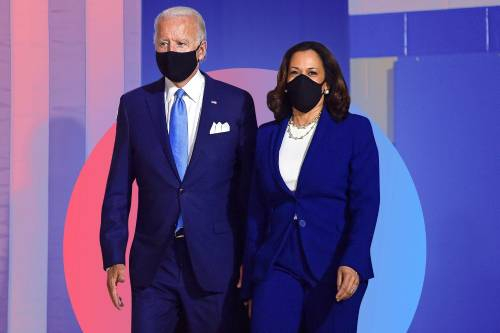
Ever since the outbreak in March, Biden has been extremely critical of the way Trump has been managing the pandemic. For every area Trump has erred, Biden shows how he would have approached the issue differently. In terms of the pandemic, he tells the nation to follow the guidance of public health experts and to stay at home to fight the spread of the virus.
6. Developed an app
With an app for just about everything these days, Team Biden developed The Vote Joe App, the official application of the Joe Biden campaign. The app was developed with one objective in mind: to engage with voters. Acting as an engagement tool, anyone in America can register with their email and address. Once registered, all app features are available such as sending canned Joe Biden text messages and sharing information about your contacts.
The latter is known as “relational organizing”. According to the app’s guide, it is defined as “when volunteers leverage their existing networks and relationships in support of our candidate, Joe Biden.” Once you’ve downloaded and signed up, you may sync your phone’s contacts or find a voter in the app’s database. Next, you may report specific information about that contact. The information may include their interests and their occupation.

Finding voters through Relational Organizing
The Vote Joe App is integrated with a database compiled by Target Smart. Any registered user is allowed to access the database of over 191 million voter records. You may search through the database by keying in first name, last name, and state. Once these parameters have been filled, you will receive information on all the elections that voter has taken part in.
7. Naughty marketing tactics
In the 2016 presidential race, Donald Trump won with his slogan “Make America Great Again!”. For the 2020 election slogan, he’s opted to go for “Keep America Great”. Having launched his campaign in 2019, his rival Joe Biden was quick to play some naughty marketing tactics. As soon as the new slogan was announced, Biden bought the domain to use it as a weapon against Trump.
So what has he done with the domain? He has loaded it with anti-Trump content. If you visit www.keepamericagreat.com, you’ll see a black and white picture of Donald Trump with a sad face. Below his image, you’ll spot the slogan of the website.
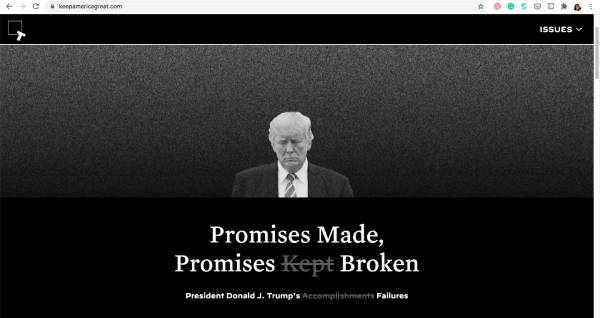
As you scroll down, you’ll come across this:
Trump isn’t looking for a second term – he’s looking for a do-over. Here’s how Trump’s record stacks up against the promises he made to the American people.
Keep scrolling further down and you’ll see examples of the promises he’s made and broken. Promises covering the economy, jobs, immigration, foreign policy, national security, COVID-19, and so much more. They’ve all been laid out. This website showcases all of Trump’s failures.
Biden and his team have managed to come up with a brilliant way to use this website to portray a negative image of Trump. When asked for a comment, Trump’s party gave no response. It’s high time that another politician gives Trump a taste of his own medicine. He isn’t the only one who knows how to take digs at his opponents.
All of Team Biden’s campaign activities center around his three main challenges. He continues to unite the party by proposing the plans that other members are passionate about. On top of that, he’s shown the public that he’s a responsible candidate who is willing to properly manage turmoil. Last but not least, he’s revealed his tough personality when it comes to dealing with Trump.
Justin Trudeau
Enough of American politics. As we travel not far to neighboring Canada, we also observe similar digital marketing behavior. In Canada, Justin Trudeau heavily relies on social media for his own political agenda. Elected as the Prime Minister of Canada on October 19, 2015, Trudeau is exceptionally active on Instagram. He uses this platform to communicate with his audience visually.
After breaking records as the most extended campaign in the past century, the Liberals were victorious during the federal election. They won more than half of the seats and the majority of the popular vote. It was a solid performance giving them a powerful stance in the government.
Trudeau’s success has been attributed to his campaign performance as well as his televised debates. As we break down the young prime minister’s strategies, we notice that political marketing is heading towards significant and noticeable changes. Gone are the days of traditional media as we see less and less usage. With politicians actively campaigning on these new digital platforms, it’s beginning to set a new trend in political communication.
Here is a list of activities and strategies carried out by Team Trudeau helping him to win the 2015 election
1. Social Media Strategy
Beating his competition at video marketing
Studying the strategies of all candidates, there were similarities shared as well. Other candidates also utilized video marketing on social media platforms. However, Trudeau beat them in terms of creativity and messaging. Most of his videos were 6-30 seconds long. They were short, to the point, and caught the attention of the audience. His content was widely shared and retweeted.
On top of that, he also mixed humor into the plot. From speeches to cartoons, his videos were not the conventional or serious type. In the video below titled ‘Different hair, same platform’, it outlines the plans of the Liberal party. At the same time, it also takes digs at different hairstyles.
Connecting with the people on a deeper level
One of Trudeau’s main goals is to connect with his audience and make them feel like they are a part of his team. Using hashtags such as #GenerationTrudeau and #RealChange, the young prime minister had his audience feeling like they were making a change together.
Months before his campaign kicked off, he was aware that to reach Canadians, he had to go online and connect with them. He couldn’t just rely on press releases and conventional methods. He knew that his content had to be more diverse than just political matters, which is why he didn’t only post about policies and government changes. A lot of his tweets focused on emotional appeal. Instead of telling people what he would do, he focused on why he was doing it.
Positioning himself as a family man
Besides focusing solely on politics, he also won the hearts of Canadians by revealing that he was a family man. Trudeau allowed the audience to come behind the scenes by giving them a glimpse into his family life. This covered tweets of wishing his late father a happy birthday to celebrating his son’s eighth birthday. Through these “family man” tweets, he positioned himself as a caring father, husband, and son.
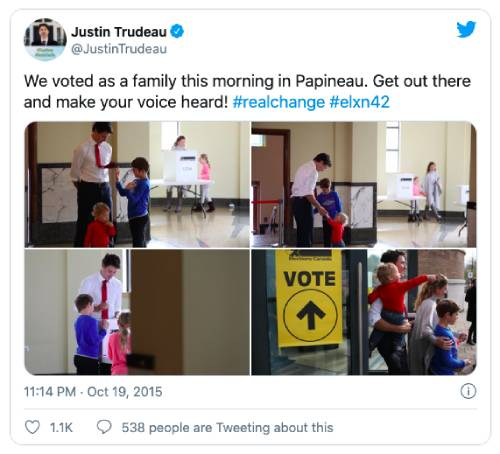
Reaching out and engaging with Canadians on multiple social media platforms
It’s not just about consistently posting on social media platforms. Another critical component is engagement. Team Trudeau replied and engaged with his online audience. These actions showed that they weren’t only disseminating information to the public; they were also listening. Furthermore, all posts were published in English and French to accommodate the two most spoken languages in Canada.
Trudeau was able to propel his personal appearance and social media presence while other candidates only focused on the first part. Even after he won the election, he continued his social media practices. To this day, he continues to reach out and engage with Canadians on major social networking platforms.
Today his Instagram account has amassed a 3.8 million following with a total of 1,403 posts.
2. Ads: Creative point of view
When you hear the words political advertising, you might think about only political topics and a more direct approach. However, Team Trudeau wanted to do things differently. Instead of the usual dry content, they wanted to have a creative point of view. The whole idea was to have the ads not looking or feeling like political advertising.
The ad concepts were the brainchild of his advisors, Gerald Butts and Katie Telford, and other members of the campaign team. Team Trudeau also worked together with an agency. It was Bensimon Byrne who wrote the ads, designed the look, and directed the shoots. At the time, the campaign was led by partner and chief creative officer David Rosenberg of Bensimon Byrne.
“They worked on concepts that we developed together. David would take them away and make the creative presentation incredible,” Mr. Butts said.
Following the campaign, Rosenberg shared which ads he thought had the most significant impact on the campaign, as well as how they came about.
Ready
Released in the summer, this ad followed Trudeau walking on Parliament Hill. During his walk, he brought up the ads of the opposing party that had constructed him as “just not ready”. Retaliating against the Conservatives, the script crafted for Trudeau had him saying that he was ‘not ready for an economic recession or job losses’.
“There’s a rule that you’re not supposed to parrot the language your opponents are using against you – an accepted rule of political advertising,” Mr. Rosenberg said. “I said, ‘I think it’s time to break some rules here.’ By taking that criticism head-on, we were able to begin to change people’s perceptions.”
After it aired, the ad gained popularity and continued playing up until the election. Trudeau also showed toughness and that he was willing to respond to the claims of his opposition. He was willing to put up a good fight and refused to accept any personal attacks. No one wants a weak prime minister.
Escalator – Harder to Get Ahead
In this ad, the leader of the Liberals is seen walking up a downward moving escalator. The ad is not about the escalator. It is a metaphor describing how Canadians have been stuck on their downward escalators for ten years under Stephen Harper. And against such a strong force, they will eventually make it to the top. Check out the video here:
“To make the point to the visual metaphor, was a risk for him,” Mr. Rosenberg said. “He put himself out there in such a unique way. It’s a set piece.”
“Do I look scared to you?”
In this ad, it features former Mississauga mayor and powerhouse Hazel McCallion. She agreed to star in this ad to combat more claims made by the Conservatives. Trudeau’s opposition had claimed that he would cancel income splitting for seniors.
McCallion is seen responding to the claims. She counters with, “Stephen Harper isn’t telling the truth saying Justin Trudeau will cancel income splitting for seniors. It’s like one of those phone scams seniors get because Harper thinks we’re scared. Trudeau will also restore old age security back to 65, that’s up to $30,000 more for seniors. Stephen: Do I look scared to you?”
3. Viral potential
As we continue to break down Trudeau’s strategies and study the content he publishes, we notice that he knows how to create powerful moments with high viral potential. He has mastered the art of creating moments that spread like fire on traditional and social media.
Let me list an example of his mastery. After a landslide election victory, the next morning, Trudeau made an appearance at a local metro station in Montreal. He showed up without a security detail, nor was he dressed formally. Why did he show up there? To thank voters. The astonishing thing about this event was that he did not inform the press. It turns out that only a few members of the media actually knew.
It was intentional. Trudeau didn’t want it to come off as a planned activity. Team Trudeau thought that if he showed up unexpectedly, the public would be surprised to see their newly elected prime minister shaking hands with strangers. And that this would spread like fire throughout social media.
They were right. The new prime minister made an appearance in a place that would be an ordinary citizen’s commute. It was indeed a surprise and everyone loved it. It also portrayed Trudeau as warm and charismatic, unlike his predecessor. The former prime minister had always been known to be unapproachable and distant.
Similarly, his team planned quite a surprise for his swearing-in ceremony as well. Check out the video below:
Politicians often overlook moments. But not Trudeau’s team. They knew how to take advantage of the situation. For his swearing-in ceremony, Trudeau arrived on foot together with his diverse and inclusive cabinet. Not only that, the public was encouraged to participate in the ceremony. They were allowed to gather and interact with the media.
Clearly, Justin Trudeau understands the magnitude of moments.
4. Random act: Making phone calls to random people
In line with how he likes to be involved in surprising acts, here’s another one. Approaching the next federal election, Team Trudeau came up with a new marketing technique: calling random people. And not calling just to say hi, but to have conversations on a variety of issues. Some of the calls have even gone up to half an hour long.
“While a lot of attention is being paid this month to the series of town-hall meetings that Trudeau is holding across Canada, these phone calls are a lesser-known method of trying to keep the prime minister in touch with people outside the political bubble. It’s really the opposite of mass communication — a form of niche marketing, you might say, by this prime minister.” – Susan Delacourt
This type of personal reach is not scalable, but he’s getting lots of points for connecting with the people. Most politicians choose to stay in their bubbles. The lack of interaction means that they lose the connection with ordinary joes on the street. They fail to understand that these citizens are also voters and have issues to be solved.
Connecting with people on a personal level is extremely important. If your voters are your “customers”, you need to be using creativity to get their attention. In today’s world, it might be a considerable challenge as your customers are bombarded with a ton of information.
Creativity is also related to embracing the unknown. As marketers, you need to have the courage to go out there and do things that others aren’t doing. To stand out, you’ll need to stop looking at your competition and try to kickstart a new concept.
Besides creativity and having a unique image, marketing is more than just grabbing attention. After you’ve managed the first part, the next thing to do is nurture your relationship with customers. Too many brands manage to catch some eyeballs, but fail to do more than that.
Many companies take their customers for granted. They think that once a lead becomes a customer, they’ll stick around forever. But these days, with so much competition, customers can quickly turn into non-customers. So when Trudeau does something like talk to someone for 30 minutes, he’s nurturing the relationship. He might not be able to call the entire nation, but people know that he’s making an effort to stay connected.
The 2015 election saw the highest turnout since 1993. 68.5% of the nation came out to vote. One of the main reasons was Trudeau’s campaigning efforts. He didn’t ask them to vote for him, but he wanted everyone to have a voice. His ability to connect and speak to the people motivated them to make an effort. At the same time, he also portrayed himself as a relatable candidate who was keen about dealing with their issues.
Before Canada had Trudeau as a candidate, other politicians relied heavily on photo-ops. Justin Trudeau proudly wields social media and moments. His actions are re-defining political marketing. With his success in this area, we will see more of this play out in the post-Trudeau era.
As society and technology become more advanced, so will methodologies and trends. How we consume digital content today will continue to be studied by marketing professionals. To stay in the game, marketers need to constantly reinvent and get with the times.
With every election that comes and goes, the strategies and tactics utilized by each team play a huge role in winning the voters. From emotional YouTube ads to a demographic Facebook strategy to mischievous attacking tactics, it’s always interesting to see what presidential candidates have up their sleeves.
Community

Congratulations on reaching the end!
Check out our podcast Impact Talks, where you can listen to high-profile experts from various backgrounds!
Join our Facebook Group Community with over 4,700 entrepreneurs, innovators, and creators by Startup Funding Event, where you get access to free live training, daily Q&As, design templates to get your business started, and support from the SFE team. Join here!

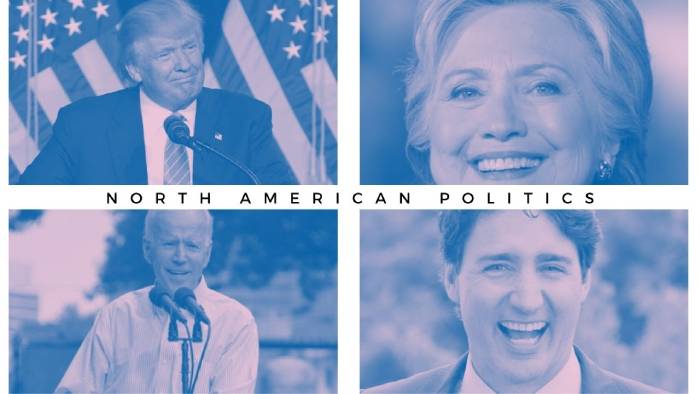
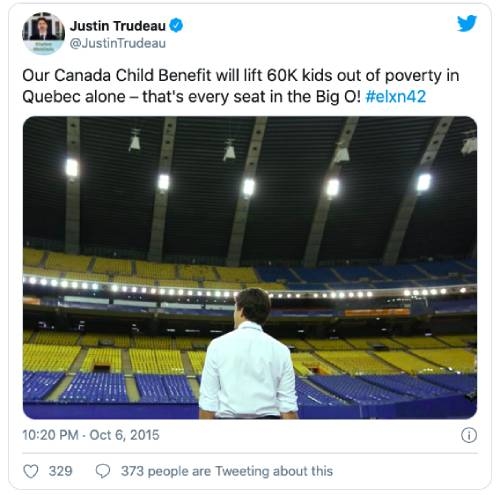



Leave a Reply
Want to join the discussion?Feel free to contribute!